Better Plants, Better Planet
By Kate Bachman | February 8, 2016
Category: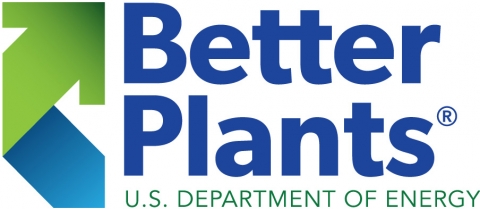
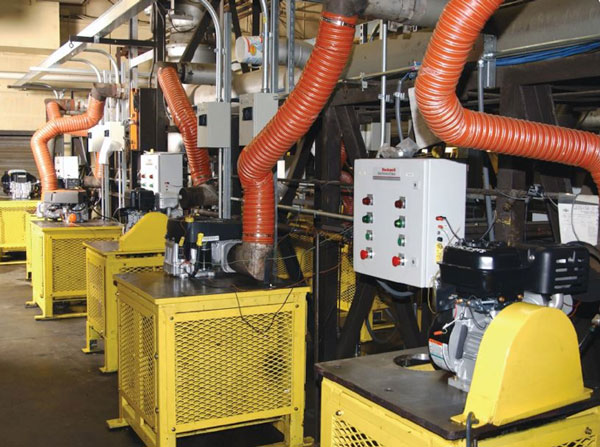
U.S. DOE Better Plants Challenge partner Briggs & Stratton, Wauwatosa, Wis., reduced its energy by installing energy recovery systems in its test engines. Photo courtesy of Briggs & Stratton.
Historically, it seems, industry and government have related more like suspicious, adversarial foes than aligned partners working cooperatively toward common goals—especially in the environmental realm.
Then, somewhere along the line, government grew weary of being regarded as a feared task master, and industry grew weary of being viewed as a pariah to its communities, workforce, and prospective employees, and society as a whole. Green manufacturers wanted to clean up the segment’s tarnished image and reverse the consequences of an unbridled polluting, throwaway, and profits-at-any-cost business culture that materialized as flaming rivers, tainted water supplies, poisoning consumer products, blackened skies, and class-action lawsuits.
In recent years, climate change has brought the topic of environmental protection to the fore, intensifying the sense of urgency in the growing collective consciences of responsible manufacturers that don’t want to be responsible for its ravages.
Better Plants Germinates
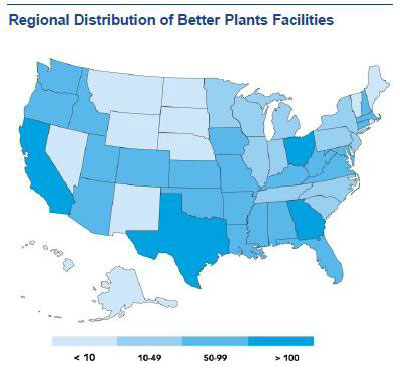 Today, 160 manufacturers and industrial-scale energy-using companies, including Sustainable Manufacturer Network members Whirlpool, Harbec, Steelcase, and Sherwin-Williams, are partners in the U.S. Department of Energy’s (DOE) voluntary Better Plants program (see Figure 1). They represent approximately 2,400 facilities and 11 percent of the total U.S. manufacturing energy footprint.
Today, 160 manufacturers and industrial-scale energy-using companies, including Sustainable Manufacturer Network members Whirlpool, Harbec, Steelcase, and Sherwin-Williams, are partners in the U.S. Department of Energy’s (DOE) voluntary Better Plants program (see Figure 1). They represent approximately 2,400 facilities and 11 percent of the total U.S. manufacturing energy footprint.
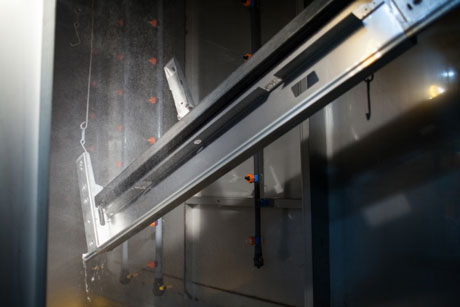
Figure 1:
U.S. DOE Better Plants partner and Sustainable Manufacturer Network member Steelcase shrunk both its energy and water consumption by making changes in its wash station. Photo by Sustainable Manufacturer Network.
“President Obama launched the Better Buildings Initiative in February 2011 (see Figure 2). He set an overarching goal of improving the energy efficiency of industrial and commercial buildings by 20 percent over 10 years. So Better Plants is the way we engage the industrial sector in that initiative,” said Andre de Fontaine, the program’s lead.

Figure 2:
The Better Plants program is part of President Obama’s Better Buildings Initiative, launched in 2011, the goal of which is to improve the energy efficiency of industrial and commercial buildings, including factories, by 20 percent over 10 years. (Official White House Photo by Lawrence Jackson).
The energy reduction efforts are part of the agency’s environmental goals. “We want to help reduce air pollution. We want lower greenhouse gas emissions. We want a strong U.S. manufacturing sector,” de Fontaine continued. “We believe this program helps accomplish those goals.”
How Better Plants Works
Manufacturing companies that sign up for the voluntary program agree to set a target to reduce energy intensity by 25 percent over 10 years, de Fontaine said.
Energy intensity is defined as the energy required to make a certain unit of output, such as the amount of energy needed to make a car or a pound of metal washers, rather than a “straight-up absolute reduction in energy consumption,” de Fontaine explained. “The intensity metric allows you to account for growth in your business without being penalized. You can still allow some increases in energy usage if your business is growing. The key is that, on a per-unit basis, you are seeing reductions of 25 percent or more.”
The only costs of the program are the costs of implementing the energy initiatives. The savings manufacturers realize by participating and cutting 25 percent of their energy usage are 100 percent theirs to keep.
For many manufacturers, reducing energy intensity by 25 percent can translate to savings of tens of millions of kilowatt-hours and millions of dollars. Even those that are still midstream in their goals have seen the benefits of their savings. For example, General Mills, a Better Plants Challenge partner, has realized combined energy reductions from individual plants that have saved $13.5 million to date.
Two Tiers. Companies can join one of two separate membership levels.
The Better Plants Program is the broader-based level. Manufacturers report their progress annually on how much they’ve reduced their energy intensity. The aggregate results are publicized on the program’s site at the end of the year. “We don’t publicize their individual data unless they agree to do so,” de Fontaine said.
To date, program partners have saved about 460 trillion British thermal units (TBtu) and $2.4 billion cumulatively in energy costs.
The second tier, the Better Plants Challenge, is a higher-level leadership group, de Fontaine said. Those companies agree to post their individual annual performance data publicly on the site. Their data is tracked throughout the year. “That’s one of the extra things they commit to.
“The idea of the challenge level is we want to encourage market leaders to be as transparent as possible—not just about their data, but also on how they’ve done what they’ve done to serve as blueprints and playbooks for others to follow,” de Fontaine continued. “The challenge level appeals to the cream of the crop among our partners.”
Currently about 130 companies are in Better Plants broad-based program and another 30 in the Better Plants challenge.
DOE as Rich Resource, Helpful Partner
Some manufacturers may find the 25 percent a little daunting. De Fontaine and his team help and support program partners every step of the way to reach the target with resources, advisors, webinars, and workshops, and even on-site training. In addition, they receive recognition in several ways.
Resources. The DOE’s Better Buildings Solutions Center is a deep well of data, research, benchmarking, best-practice overviews, implementation models, showcase projects, and other information that program partners can tap into. Manufacturers can search by sector and solution type.
“If you call up the Industrial Showcase projects, you get a good flavor of some of the more technical plant-based solutions that companies have put in place—things like compressed-air leak detections or a solar energy array,” de Fontaine said.
He added that implementation models are less about technologies or specific projects and more about systemic, corporatewide initiatives that facilities have put in place to overcome barriers to energy efficiency. “So that may include things like employee-training programs, mechanisms to help capital flow to energy projects, and methods to ensure that senior management stays committed over the long term.”
Advisors. Partners have access to an expert technical account manager who can help them manage the program. The account manager is the go-to person who can assist with tracking, setting up training, and steering the partner company to the resources that serve it best.
Recognition. Better Plants offers national recognition, including letters from DOE leadership, certificates, invitations to special events, and media opportunities. Challenge partners gain recognition just by virtue of posting their goals and progress on the site.
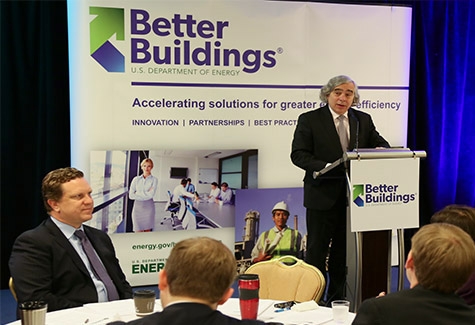
Figure 3:
U.S. Secretary Moniz addressed participants of the Better Buildings Summit in 2014, at which Better Plants partners were recognized.
Training. In addition, the agency sets up in-plant trainings (INPLTs), workshops to guide each manufacturer-partner through a nonpunitive energy audit that points out specific problem areas, such as leaking air compressors or inefficient motor-driven equipment. They are led by DOE experts that train participants on how to identify, implement, and replicate energy-saving projects. Partners host an on-site, three-day training at one of their facilities and invite others to attend.
The visit results in customized recommendations for ways to improve. Those recommendations vary widely from plant to plant, depending on their products and processes.
“The manufacturing sector is very complex. There is a lot of variation from company to company, but there are some basic energy management strategies we believe all companies should use,” de Fontaine said.
“They ought to be setting goals and assigning a person to be responsible for the energy-efficiency strategy. They should be establishing mechanisms to measure and track their consumption and energy intensity. And they should be working to ensure there is some capital flowing into projects.”
To that last point, although some great improvements can be made without capital investments through basic operational improvements such as shutting off equipment and replacing energy-gorging lighting with energy-efficient fixtures, eventually companies will need to invest capital in energy projects, de Fontaine said.
Leadership by Example
Better Plants is a leadership program, de Fontaine said. That is to say, the agency’s business model and acumen are that as leading manufacturers subdue their energy intensity, they subsequently serve as leaders to other manufacturers that have not yet engaged energy efficiency initiatives fully—setting an example of what can be accomplished and how.
“As leaders, they demonstrate that these goals can be met and that energy efficiency is a good business solution. Not only can the targets be met, but they can be met cost-effectively. That helps the bottom line and helps these companies stay competitive.”
The 25 percent energy intensity target is admittedly intense, de Fontaine concedes. “No question it’s ambitious. That’s the point in a leadership program. However, this is pretty much reachable for everybody, provided they put in the resources and effort into reaching it.”
Manufacturer managers who are interested in the Better Plants program can contact de Fontaine at andre.defontaine@ee.doe.gov or visit the site to find out more. Manufacturers interested in sustainability are invited to join both the Sustainable Manufacturer Network and the DOE’s Better Plants program.

Side by side, we move metal fabrication forward.
FMA unites thousands of metal fabrication and manufacturing professionals around a common purpose: to shape the future of our industry, and in turn shape the world.
Learn More About FMA


